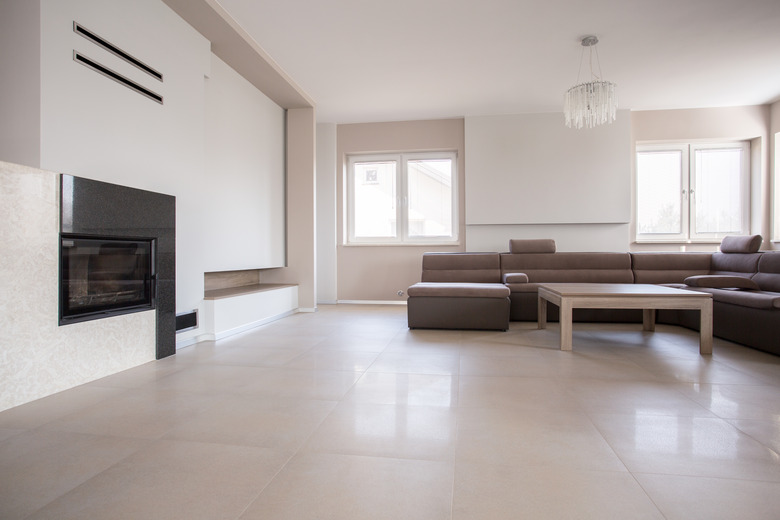How To Stain Ceramic Floor Tile
Many homes have tiled floors, but not everyone loves them. If you have a tiled floor that needs a new look, then you can quickly bring up the beauty of the floor with a slick of paint or stain.
Staining or painting tile floors is fairly inexpensive and an easy do-it-yourself project to complete. Before putting down a pool of stain or paint and rolling it over the surface, there are a few tips and tricks to know to ensure you get a gorgeous end result.
Types of Tile to Stain
Types of Tile to Stain
Not all tiles are ready to receive a stain or layer of paint. Clay tiles can be cleaned and stained without having to be sanded or otherwise treated. Any porous tile, such as Saltillo or untreated travertine, can soak up the stain to create a new floor for your living space.
Stains can darken tiles or be used to create natural or elaborate designs on the surface. Layer the stain on alternating squares to create a stone-like appearance.
When a Stain Won’t Penetrate
When a Stain Won't Penetrate
If you aren't sure of the type of tile you have, then you may want to investigate whether or not it will accept a stain or paint. A glazed ceramic tile is not porous, so the stain will simply sit on top of the surface and become a big mess.
Tile that has been treated or sealed will also have a hard time accepting a stain or paint. For tile that has a slick surface, it will need to be sanded before a tile stain or paint can be applied.
Epoxy paints can be applied to glazed or sealed tiles. This specialized type of ceramic tile paint is easy to work with and applied in the same way that other floor paints are rolled on. Any treatment you put on glazed or sealed tiles will wear off rather quickly.
Prep Before You Stain
Prep Before You Stain
Irregularities in the shade of stain or paint can appear if you have to pause in the middle of the task. Clear the area of all appliances, furniture and other heavy items before you begin the floor project. Shut off any fans and close all vents that can blow onto the clean tiled floor as you work.
Clean the tile well before you begin, using a solution of a few drops of mild dish soap in a bucket of warm water. Allow it to dry completely.
If the tiled floor backs up against carpeting or entryways that you don't want to be affected by the stain, block them off with painter's tape. Cover carpeting and other floor areas with a tarp so it doesn't get any unwanted splashes from the stain or paint you are applying. Protect baseboards from splatter with painter's tape, and use acrylic masking tape to cover grout lines that you don't want affected.
Painting Tile Floors
Painting Tile Floors
After you have cleaned and otherwise prepared the tile floor, vacuum the surface to create a smooth canvas with no grit. Choose a semi- or high-gloss latex or oil-based paint. The oil-based paint works better than latex, but will add drying time to your project schedule.
Use a long-handled roller for large areas and a brush for smaller sections. Start at a corner of the room and work toward an exit. Work in small batches, in smooth strokes, for an even layer of stain or paint.
For patterns, begin by cutting in with an angled brush along the edge of each tile. If the paint is difficult to spread, then mix in a small amount of paint thinner to make it easier to apply to the tiles.
